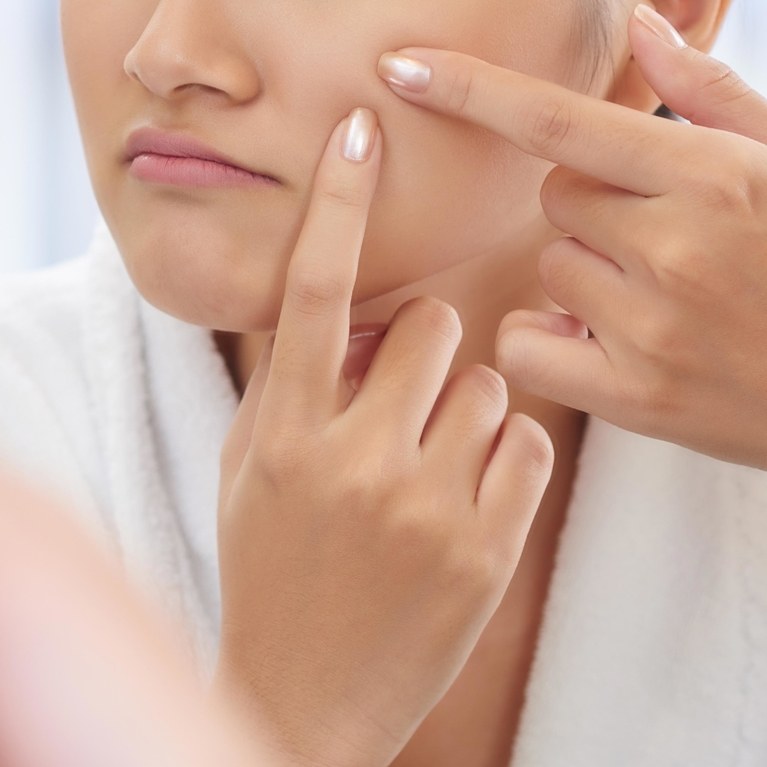
MRSA and acne
Methicillin-resistant Staphylococcus aureus (MRSA) is a bacterium that commonly causes skin infections. It’s often mistaken for acne at first glance.
Acne is a common and generally harmless skin condition that’s caused by inflammation and clogging of the skin glands and hair follicles. Bacteria that normally live on the skin surface may also get inside these clogged areas but not always.
MRSA skin infection, on the other hand, is a serious form of Staph infection that develops on the skin and can cause deeper problems in the body.
What are the differences, and how do you spot them?
MRSA
MRSA is an antibiotic-resistant form of Staph infection that commonly develops on the skin. Staph is short for “Staphylococcus,” which is a type of bacterial genus. The “aureus” part of MRSA is the species.
There are multiple other species of Staphylococcus bacteria that exist and can cause infections. In the United States, MRSA is the most common cause of skin and soft tissue infections.
Staph bacteria are not unusual and can be commonly found on the skin, even on healthy individuals, in these areas:
inside of the nose
mouth
genitals
anus
You can carry Staph bacteria on your body without it ever causing problems. Problems can, however, occur when the body’s largest barrier to infection the skin is broken.
How does MRSA develop?
Staph infections and MRSA usually develop around cuts and other wounds in the skin. Breaks in the skin give the Staphylococcus aureus bacterium the chance to enter the body. When the MRSA enters the skin, a significant Staph infection may develop.
What makes MRSA different from other Staph infections?
MRSA is a form of Staph infection that is antibiotic resistant, meaning it’s very hard to treat with certain antibiotic medications.
Antibiotic resistance is what happens when bacteria genetically adapt against the effectiveness of antibiotics that were previously effective. To treat antibiotic resistant bacterial infections like MRSA, a different and stronger antibiotic treatment is needed.
How to tell MRSA from acne
Staph infections are commonly mistaken for acne because the first symptoms of Staph include the outbreak of red, swollen lesions that may look like acne pimples.
How can you tell the difference between a harmless outbreak of acne and a dangerous Staph infection like MRSA? While the most effective way to determine if you have MRSA is to get a culture of the affected skin at the hospital or your doctor’s office, you can look for certain hints and signs to determine if it’s acne or MRSA.
Signs you can look for to tell MRSA apart from regular acne:
In a large outbreak, MRSA pimples more closely resemble boils than acne pimples.
MRSA pimples will not respond to standard acne treatments like benzoyl peroxide or salicylic acid.
Acne tends to crop up in the same few places on the body — face, back, chest, shoulders — whereas MRSA pimples can appear anywhere on the body and may involve just a single lesion.
MRSA pimples are more closely situated around cuts/breaks in the skin.
MRSA pimples are usually more painful than acne pimples.
MRSA pimples are often surrounded by areas of inflammation, redness, and warmth.
The outbreak of MRSA pimples is often accompanied by a fever.
Risk factors
If you develop an outbreak of pimples and are unsure if they’re acne pimples or MRSA pimples, there are some risk factors to be aware of.
You’re at a higher risk of MRSA if you:
were recently hospitalized
regularly undergo hemodialysis
have a weakened immune system
share razors or other types of sanitary/toiletry equipment
live in crowded or unsanitary conditions







